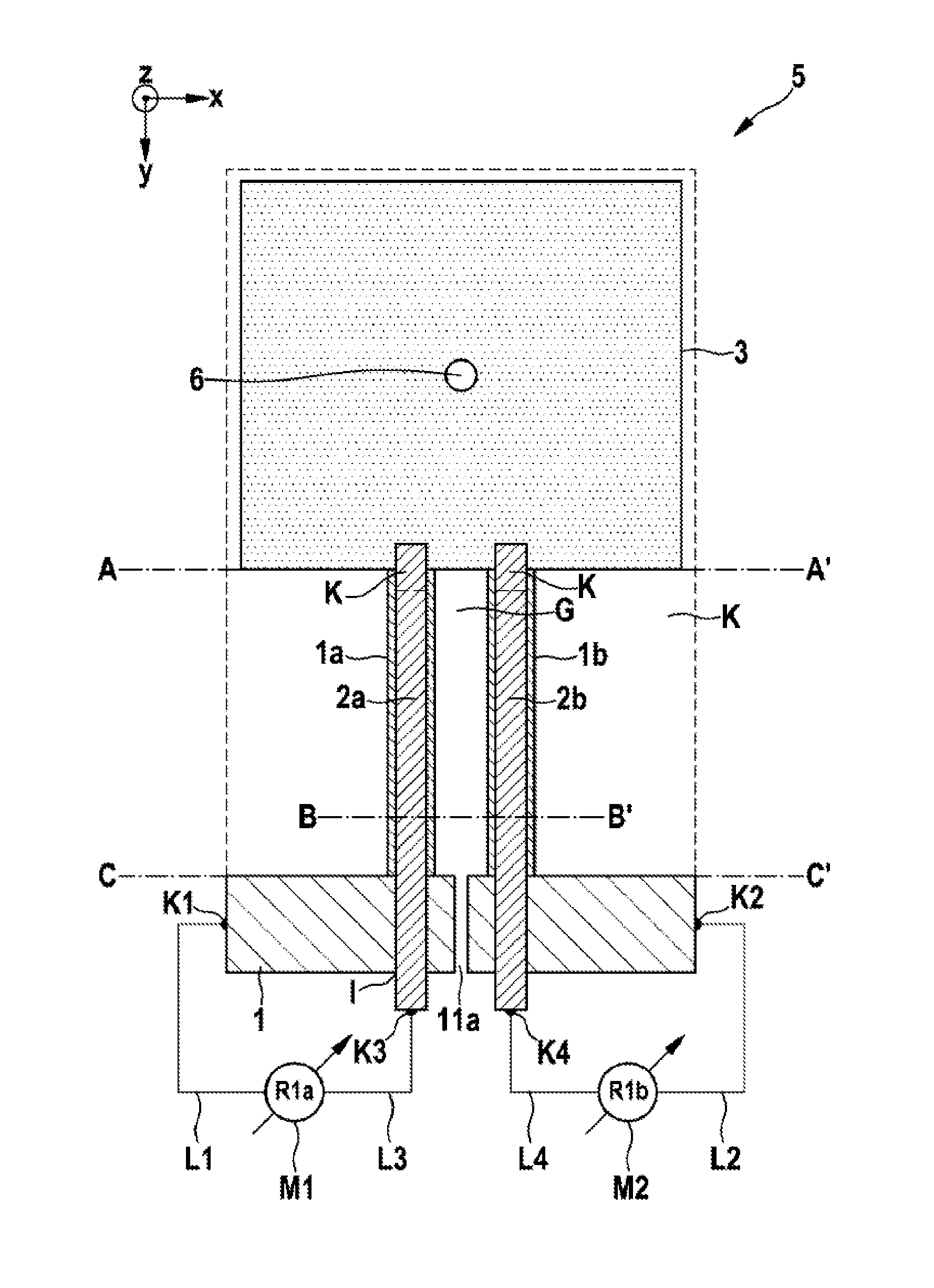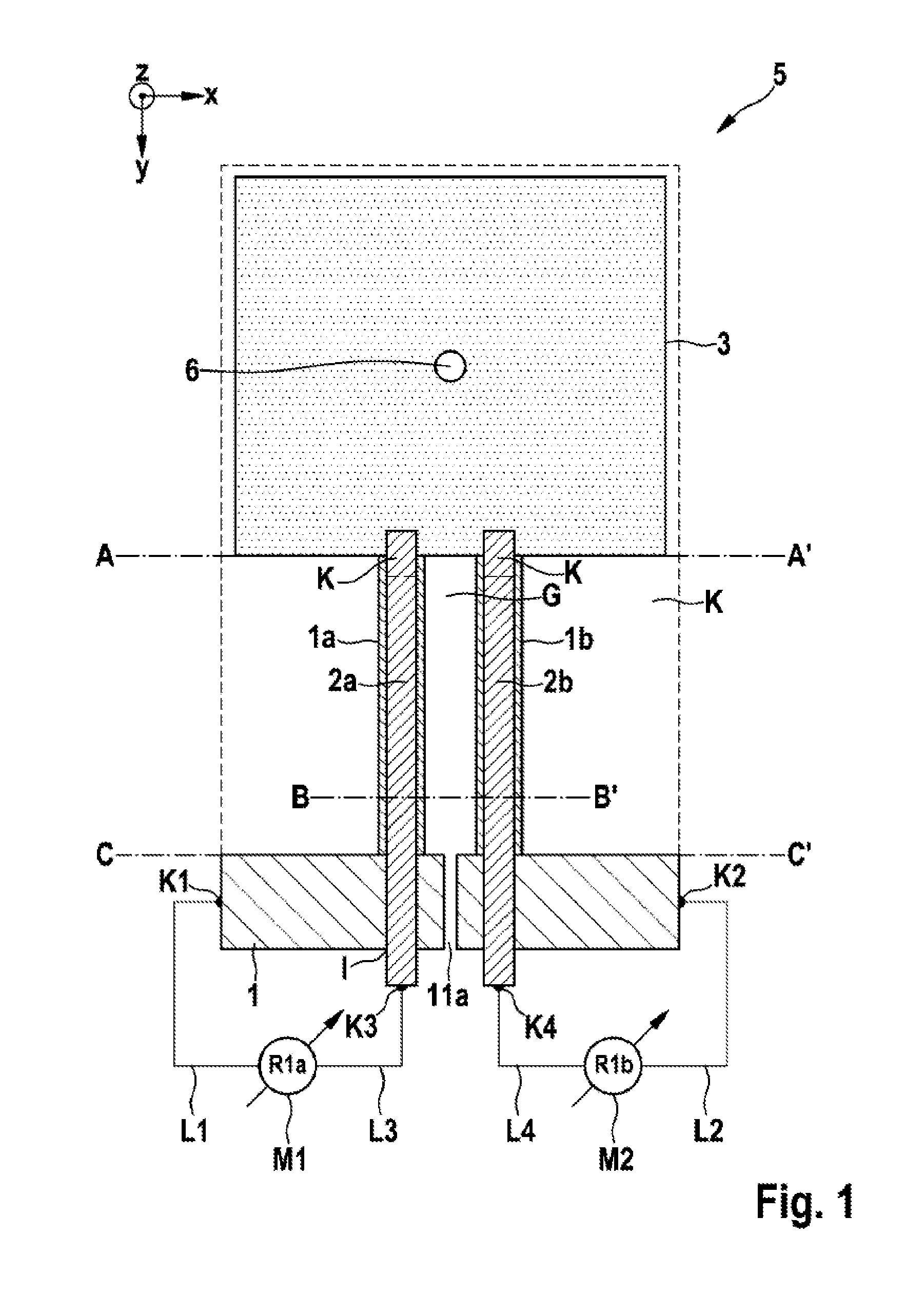Piezoresistive Micromechanical Sensor Component and Corresponding Measuring Method
a micromechanical sensor and micro-mechanical technology, applied in the direction of measuring devices, speed/acceleration/shock measurement, instruments, etc., can solve the problems of increasing process outlay with respect to the required trenches and reducing mechanical sensitivity
- Summary
- Abstract
- Description
- Claims
- Application Information
AI Technical Summary
Benefits of technology
Problems solved by technology
Method used
Image
Examples
first embodiment
[0026]FIG. 1 is a plan view of a piezoresistive micromechanical sensor component in the form of a micromechanical acceleration sensor arrangement according to the present invention, and FIGS. 2a-c illustrate cross sections of the piezoresistive micromechanical sensor component in the form of a micromechanical acceleration sensor arrangement according to FIG. 1 along the lines AA′, BB′ and CC′.
[0027]In FIG. 1, reference 5 denotes a piezoresistive micromechanical acceleration sensor. Starting from the substrate 1, two homogeneously doped piezoresistive beams 1a, 1b extend to the seismic mass 3, which is therefore connected to the substrate 1 via these beams 1a, 1b. Below the beams 1a, 1a and the seismic mass 3, there is a cavity K.
[0028]The insulation trench G between the piezoresistive beams 1a, 1b may also be configured as a narrow insulation trench (STI). In this way, the beams 1a, 1b can be placed closer to the rotation point, the effect of which is to amplify the lever action.
[00...
second embodiment
[0036]FIG. 3 is a plan view of a piezoresistive micromechanical sensor component in the form of a micromechanical acceleration sensor arrangement 5′ according to the present invention.
[0037]In the second embodiment, shown in FIG. 3, an undoped bending beam 7 is provided which connects the seismic mass 3 to the substrate 1. Here, the homogeneously doped piezoresistive beams 1a′, 1b′ are provided not between the substrate 1 and the seismic mass 3 but between the substrate 1 and this bending beam 7. Such a configuration, the piezoresistive beams 1a′, 1b′ being placed at an angle α (here: 90°) with respect to the bending beam 7, allows greater geometrical freedom, for example a modified length of the beams 1a, 1b with a constant distance between the centre of gravity 6 of the seismic mass 3 and the point of suspension from the substrate 1 (lever arm length).
[0038]The angle α is of course not restricted to 90°, but may be varied freely. Also, the beams 1a′, 1b′ do not need to have the sa...
PUM
 Login to View More
Login to View More Abstract
Description
Claims
Application Information
 Login to View More
Login to View More - R&D
- Intellectual Property
- Life Sciences
- Materials
- Tech Scout
- Unparalleled Data Quality
- Higher Quality Content
- 60% Fewer Hallucinations
Browse by: Latest US Patents, China's latest patents, Technical Efficacy Thesaurus, Application Domain, Technology Topic, Popular Technical Reports.
© 2025 PatSnap. All rights reserved.Legal|Privacy policy|Modern Slavery Act Transparency Statement|Sitemap|About US| Contact US: help@patsnap.com



